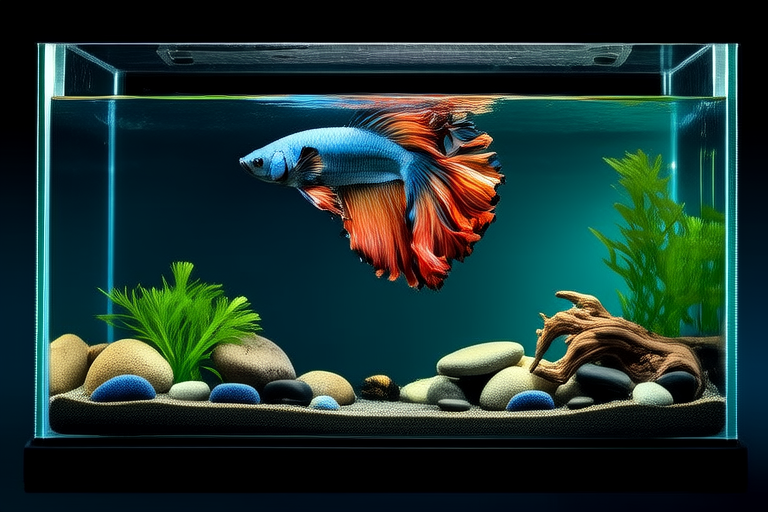
Adorable Photos of Golden Hamsters You Need to See
Welcome to a world where soft fur meets tiny paws, where every whisker twitch tells a story, and where each little nose sniff is an adventure. Imagine a creature so small, yet full of life, that it can bring joy and laughter into your home. These creatures are none other than the golden hamsters, the stars of our delightful journey today. In this article, we will explore the captivating world of golden hamsters, share some fascinating facts about them, and dive into the reasons why they make such wonderful companions. So, sit back, close your eyes, and let your imagination paint the scene as we embark on this heartwarming exploration.
The Golden Hamster: A Brief Introduction
Golden hamsters, also known as Syrian hamsters, are one of the most popular pet rodents around the globe. Their origin dates back to the early 20th century when a single female hamster was discovered in Syria and brought to Europe. Since then, these adorable creatures have captured the hearts of many animal lovers. With their plush, golden coats and endearing faces, golden hamsters are the epitome of cuteness. Their large, round eyes gleam with curiosity, while their small, delicate noses twitch constantly, always on the lookout for new smells.
These little bundles of joy typically weigh between 80 to 125 grams and measure approximately 5 to 7 inches in length. Despite their small size, they are incredibly strong and agile, capable of scaling walls and squeezing through tight spaces. Their ability to burrow and dig makes them natural architects, creating intricate tunnels and chambers within their habitats. Golden hamsters are nocturnal animals, which means they are most active during the night. However, don’t be fooled by their nighttime routine; they are just as playful and curious during the day.
Behaviors and Traits
One of the most charming aspects of golden hamsters is their unique behaviors and traits. They are naturally solitary creatures, meaning they prefer living alone rather than in pairs or groups. This preference stems from their wild ancestors, who were territorial and lived in isolated burrows. While it may seem like a drawback, this trait makes them easier to care for, as they don’t require the complex social structures of some other pets.
Golden hamsters are highly intelligent and can be trained to perform simple tasks, such as coming when called or using a litter box. Their problem-solving abilities are impressive, especially when it comes to navigating mazes or finding hidden treats. They are also quite affectionate, often seeking out human interaction and forming strong bonds with their owners. Many golden hamsters enjoy being held and petted, but it’s important to handle them gently and respect their personal space.
When it comes to playtime, golden hamsters are full of energy. They love running on exercise wheels, exploring tunnels, and playing with toys. Their curiosity leads them to investigate every corner of their habitat, and they never tire of discovering new things. Watching a golden hamster at play is like watching a tiny explorer set off on a grand adventure, with every step filled with wonder and excitement.
Cuteness Factor: Why Golden Hamsters Are Adorable
Golden hamsters are undeniably cute, and their charm lies in their innocent expressions and gentle nature. Their large, expressive eyes are often described as soulful, and their tiny paws are irresistible. Imagine a golden hamster peeking out of its cozy burrow, its small, fluffy ears perked up, and its little nose twitching curiously. The sight is enough to melt even the hardest of hearts.
These little creatures have a unique way of displaying affection. When they feel comfortable and safe, they may nuzzle against their owner’s hand or give a gentle bite, which is often a sign of trust rather than aggression. Their soft, warm bodies are comforting to hold, and their gentle purring-like sounds are music to any pet lover’s ears. Watching a golden hamster groom itself or another hamster is like witnessing a delicate ballet, with each movement precise and graceful.
Golden hamsters also have a remarkable ability to express their emotions through their body language. When they are happy, they might wiggle their hindquarters or stand on their hind legs, showing off their tiny tummies. On the other hand, if they feel threatened or scared, they may puff up their fur, flatten their ears, or retreat to the safety of their burrow. Understanding and interpreting their body language is key to building a strong bond with your furry friend.
Why Golden Hamsters Make Great Pets
Golden hamsters are not only cute but also make excellent pets for a variety of reasons. Their small size makes them ideal for apartments or homes with limited space. They are relatively low-maintenance compared to larger pets, requiring minimal grooming and regular cleaning of their habitat. Additionally, their quiet nature ensures that they won’t disturb neighbors or disrupt household activities.
Golden hamsters are also highly adaptable and can thrive in a wide range of environments. As long as they have a clean, spacious cage, plenty of toys, and a balanced diet, they will be happy and healthy. Their nocturnal nature means that they are less likely to interfere with your daily routine, making them perfect for busy households or people who work during the day.
Moreover, golden hamsters are excellent companions for children. Their gentle demeanor and playful nature make them perfect for teaching kids about responsibility and empathy. Children can learn how to handle and care for their pet properly, fostering a sense of compassion and understanding. However, it’s important to supervise interactions between children and pets to ensure everyone’s safety and well-being.
Tips for Potential Hamster Owners
If you’re considering adopting a golden hamster, there are a few essential tips to keep in mind:
- Proper Housing: Provide your hamster with a spacious, well-ventilated cage that allows plenty of room for running and climbing. Include bedding, tunnels, and toys to stimulate their natural instincts.
- Diet: Feed your hamster a balanced diet consisting of high-quality hamster food, fresh vegetables, and occasional treats. Avoid feeding them foods that are harmful to hamsters, such as chocolate, avocado, or citrus fruits.
- Exercise: Ensure your hamster has access to an exercise wheel or other forms of physical activity to maintain good health and prevent boredom.
- Handling: Always handle your hamster gently and with care. Let them get used to your presence before attempting to pick them up. Use both hands to support their entire body and avoid squeezing or restraining them.
- Socialization: Spend time interacting with your hamster regularly to build trust and strengthen your bond. Speak softly and calmly around them to create a peaceful environment.
A Call to Action: Responsible Pet Ownership
As you consider bringing a golden hamster into your home, remember the importance of responsible pet ownership. Adopting a pet is a serious commitment that requires time, effort, and dedication. Before making a decision, take the time to research and understand the needs of a golden hamster. Ensure that you can provide a loving, safe, and stimulating environment for your new furry friend.
Golden hamsters deserve the same level of care and attention as any other pet. By providing them with proper housing, nutrition, and companionship, you can ensure that they live long, happy lives. Remember, a pet is not just a companion but also a responsibility. Treat them with kindness, respect, and love, and they will reward you with endless joy and companionship.
In conclusion, golden hamsters are more than just cute and cuddly pets; they are fascinating creatures with unique behaviors and traits. Their intelligence, affection, and adaptability make them ideal companions for families and individuals alike. By understanding and respecting their needs, you can create a loving relationship with your golden hamster and enjoy countless moments of happiness and laughter together.




